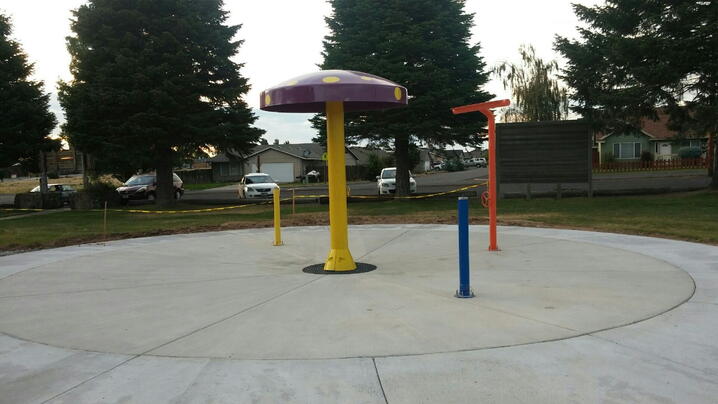
In the U.S., a total of more than $10.5 million was raised by more than 1,200 civic crowdfunding campaigns since 2010. More than 60% of these civic crowdfunding campaigns have successfully reached or exceeded their target amount (Gasparro 2015).
According to Can Chen, Florida International University, and John R. Bartle, University of Nebraska at Omaha, authors of the whitepaper Infrastructure Financing: A Guide for Local Government Managers, crowdfunding is an emerging method in communities and has become increasingly popular for raising donations for relatively small civic infrastructure projects. The approach helps build a connection between entrepreneurs whose goals are to raise the fund (the fundraisers) and investors (the crowd) who are willing to invest small amounts through an Internet-based intermediary (an online platform).
If you have considered crowdfunding for an infrastructure project in your community, it's important to note that while the approach has its strengths, it also has its weaknesses. Chen and Bartle list them as:
Strengths | Weaknesses |
|---|---|
Reduces the capital costs associated with privately financed infrastructure | Difficult to fund large infrastructure projects |
Funds small infrastructure projects quickly | May require significant resources (money and time) on funding campaign |
Increases political will to support infrastructure development | Risk of online platform closure and failure |
Involves local citizens in a civic investment |
Culver, Oregon and Nephi, Utah are two examples of communities where the crowdfunding approach was used to raise small donations for recreational infrastructure projects. In the whitepaper, Chen and Bartle discuss the key barriers and challenges both communities faced as they implemented the approach, as well as the lessons learned for each. You will see in both cases, crowdfunding was one source that was complemented by others.
CULVER, OREGON (POPULATION 1,442)
The city of Culver, Oregon, was approached by the family, friends, and “church family” of a child who passed away, to honor his memory by building a splash pad in a park. The city told the group that if it would raise the funds, the city would provide the land and assume the ownership responsibility and costs for the splash pad. The group used a crowdfunding approach to raise funds through gofundme.com. In addition to this source, the school and the Rotary Club held bake sales for this cause as their fund-raising events for the year. In total, these groups raised about $33,000. This project caught the attention of a pool company that donated the splash pad. Additional funds raised were used to purchase equipment not donated (such as a UV pool sanitizer), and the city will pay for maintenance, repair, and replacement. Remaining funds will pay for other amenities such as benches and facilities.
The group raised the funds and worked with the city to authorize payment of project bills with crowdfunded money. There were no legal barriers or restrictions to using this tool. The impetus came from the family, community, and the church, and the funds were raised very quickly, so within a year the project went from an idea to a reality. At the same time, however, the operating costs have been high, and the city was not prepared to take on this expense. Also, the city will need to decide how to pay the costs of maintenance and replacement in the future.
NEPHI, UTAH (POPULATION 5,560)
The city of Nephi, Utah, has a baseball field that did not have lights. With a strong need for the lights, the city approached several foundations for contributions. The foundations were willing to help, but wanted to see some local effort. A city intern suggested crowdfunding, established a request on the Rockethub website, and received donations there. The presence on Rockethub reached some people whom they might not have reached otherwise. The city also publicized the fundraising effort through traditional media, which attracted other donors, some of whom were less comfortable giving through Rockethub or wanted to be recognized for their donation. In the end, the funding came from three sources: five foundations provided a total of $112,500, and direct donations and crowdfunding provided $12,500. There were no legal barriers and no restrictions. The city administrator said there was not much risk in crowdfunding in this case. It can create wider support but it can be a slower process.
Key Barriers and Challenges: Online fundraising has limited potential in how much it can raise; the projects amenable to crowdfunding seem to be specific types of infrastructure, such as recreation.
Lessons Learned: Be creative to use new online fundraising websites; a good project with documented need and public benefits will be of interest; transparent on the fundraising progress.
For more approaches and examples on infrastructure financing, download the whitepaper today!
New, Reduced Membership Dues
A new, reduced dues rate is available for CAOs/ACAOs, along with additional discounts for those in smaller communities, has been implemented. Learn more and be sure to join or renew today!
